#Hollow Joe-Pye Weed
Explore tagged Tumblr posts
Text




















Walk with me: Mid-summer hike through a Central Appalachian forest. As summer hurtles toward its final explosive act, the forest's living things embrace urgent, primordial impulses triggered by shrinking daylight: to bloom, to seed, to feed, and to reproduce before the killing frost of Autumn shocks the earth into hibernation. In the deep forest, the fetid perfume of decaying fungi signals the countdown has begun. From top: a bumblebee traversing the fanning pink flowers of hollow-stemmed Joe-Pye weed (Eutrochium fistulosum); the maturing red stem and flowers of seedbox (Ludwigia alternifolia), also known as rattlebox and square-pod water-primrose, a very attractive wetlands annual with four-sided seed capsules; cowbane (Oxypolis rigidior), also known as common water dropwort, a delicate, marsh-loving member of the carrot family that also happens to be toxic; Allegheny hawkweed (Hieracium paniculatum), also known as panicled hawkweed, a spindly-stemmed member of the dandelion tribe; the lovely and hallucinogenic fly agaric (Amanita muscaria); a sprawling colony of sulphur shelf fungus (Laetiporus sulphureus), an edible delicacy otherwise known as chicken of the woods; a red eft (Notophthalmus viridescens); white wood aster (Eurybia divaricata); a twin set of common puffballs (Lycoperdon perlatum); the fungal version of suburban sprawl courtesy of orange moss agaric (Rickenella fibula); a gelatinous serving of orange witches' butter (Dacrymyces chrysospermus); a fiery clump of eastern Jack-o-lanterns (Omphalotus illudens); a potter wasp (Ancistrocerus campestris) drinking from the clumped white flowers of virgin's bower (Clematis virginiana); one of my all-time favorite critters, a locust borer (Megacyllene robiniae), taking its nectar fill from flat-top goldentop (Euthamia graminifolia), also known as grass-leaved goldenrod; a green metallic sweat bee (Augochloropsis ?) finding sustenance from parasol white-top (Doellingeria umbellata var. umbellata), also known as flat-top aster; and the intricate purple flowers of tall ironweed (Vernonia gigantea).

#appalachia#vandalia#west virginia#wildflowers#flora#summer#coopers rock state forest#glade run trail#insects#bumblebee#locust borer#potter wasp#green metallic sweat bee#amphibian#red eft#eastern newt#hollow joe-pye weed#seedbox#cowbane#allegheny hawkweed#white wood aster#virgin's bower#flat-top goldentop#grass-leaved goldenrod#parasol white-top#flat-top aster#tall ironweed#fungi#fly agaric#sulphur shelf fungus
176 notes
·
View notes
Text

Bombus impatiens and Atteva aurea on Eutrochium fistulosum / Common Eastern Bumblebee and Ailanthus Webworm Moth on Hollow Joe-Pye Weed
#Bombus impatiens#Bombus#Apidae#Atteva aurea#Atteva#Attevidae#Eutrochium fistulosum#Eutrochium#Asteraceae#Common Eastern Bumblebee#Bumblebees#Bees#ailanthus webworm moth#Hollow Joe-Pye Weed#joe pye weed#Native plants#Native flowers#Plants#Flowers#Nature photography#photography#photographers on tumblr#Duke Gardens#Duke University#Durham#Durham NC#North Carolina#🌺🌻#Native insects
6 notes
·
View notes
Text

Standing out among the others
#nature#photography#nature photography#flowers#floral#naturecore#fall#fall vibes#hollow joe pye weed#Joe-pye weeds#goldenrod
10 notes
·
View notes
Text
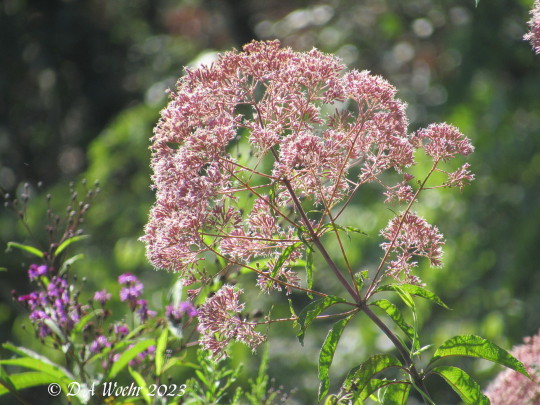
Hollow Joe-Pye Weed by Picsnapper1212
2 notes
·
View notes
Text

Hollow Joe Pye weed (Eutrochium fistulosum). Also called trumpetweed or queen of the meadow. Butterflies love it.
4 notes
·
View notes
Photo
seriously my life isn't really that interesting right now and i love it.
i'm also drinking a cup of tea as i listen to some smooth jazz, and i'm watching my across-the-street neighbor, who is retired, sweeping the snow off his walk with the broom.
the fin-tube convector of the baseboard under my desk is making a crinkling sound as it cools off as part of the heating cycle. i'm nice and toasty in this cold weather, between the tea, having my feet on the baseboard, and wearing my warmest flannel.
also in my field of view are the dead stems of my hollow joe pye weed (Eutrochium fistulosum), which is now in its third year; it is from seedlings i rescued that were coming up in part of a mowed path where they were going to get killed. they are now growing around my rain garden and i am excited to have a robust plant that is locally native and derived from a wild population, and is also really pretty in the garden. i am thinking of the other day when i was looking at the same stems and a goldfinch briefly landed on one
you can create this "boring" calm in your life if you want to. disengage from anything that is overwhelming you that is not absolutely necessary. add relaxing things, slow things.
like some of the things i am really into are plants and gardening, tea, music, and going on walks. also get to know some of your elderly neighbors if you have any. they often have a very different vibe and retired people are often both free of the fast-paced work culture, and also have a sense of perspective that can help you avoid falling into all the hectic stuff. the other night we had dinner with our other neighbors, who are also retired. i regularly talk to all my neighbors and over half of them are retired and they're really great people and i love having them in my life.
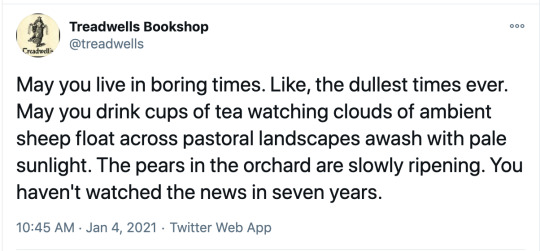
234K notes
·
View notes
Photo
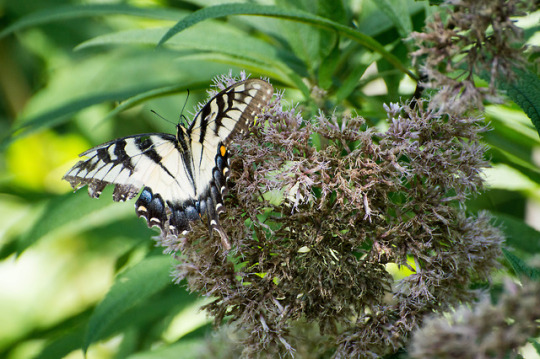

Eastern Tiger Swallowtail feeding on Hollow Joe Pye Weed. This native plant is very low maintenance and attracts hordes of bees and butterflies when it blooms in late summer.
16 notes
·
View notes
Text
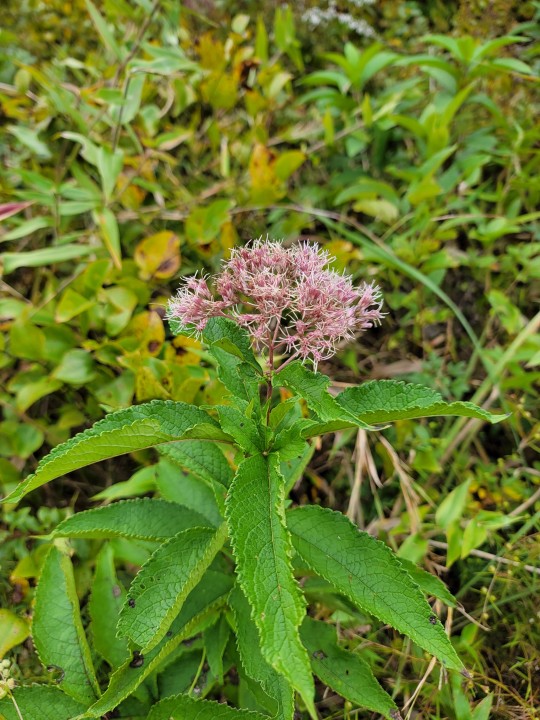

Native plants of the day: Eutrochium fistulosum or Hollow Joe Pye Weed
This species of Eutrochium (previously classified as Eupatorium) is a perennial herb closely related to Purple Joe Pye Weed. This plant is common in wet-moist locations throughout the eastern US including wide variety of stressed environments (like the serpentine barrens I found this in). The Hollow Joe Pye Weed can get up to 5-7ft easily with lovely pink/purple flowers. In late summer it's not uncommon to see this plant swarmed with pollinators and hummingbirds. This plant produces thousands of wind propelled seeds of which only a few are actually viable, making our Joe pye weed less weedy than the name implies.
4 notes
·
View notes
Photo
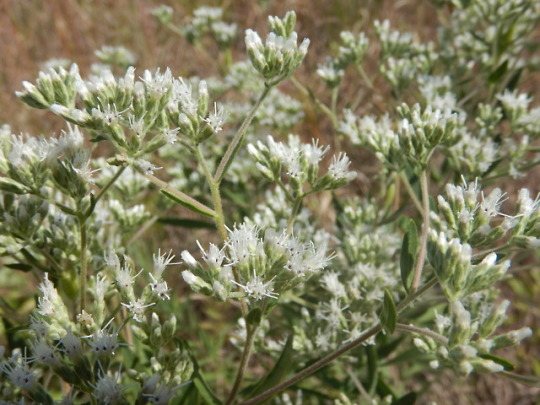
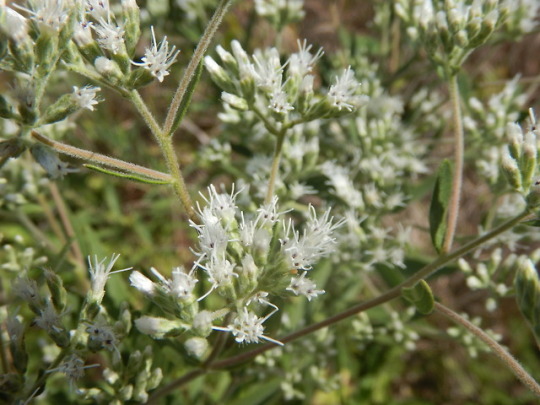
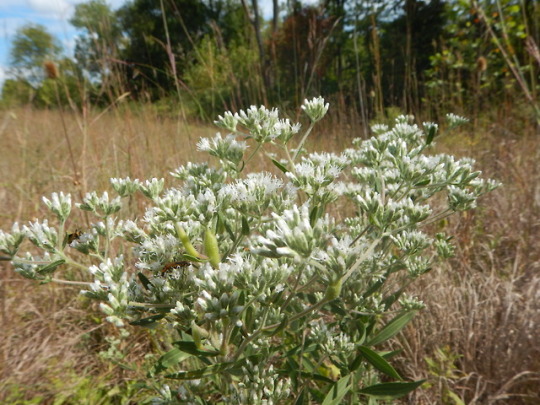

Eupatorium altissimum
Tall Boneset
Despite the name, I have never seen this plant get as tall as the other members of the “boneset” genera, such as hollow joe pye weed; then again, I’ve only ever seen this species thriving in a few places, Dry prairies in Oklahoma, prairie restoration sites that resemble old field succession, and true locations of old field succession. (This speaks to me as a sign that i’m lacking visiting other prairies and true prairie remnants.) Anywho, the posts that @geopsych has been posting recently has me dwelling on summer. It makes upset at the lack of Asteraceae knowledge that plagues me and so many of my fellow plant enthusiasts. Right now i’ve been really loving the fringlet tribe in the Asteraceae: aka Eupatorieae and have been trying to get more acquainted with the natives of Ohio that I felt like I was overlooking.The main group of Eupatorieae that I seem to miss has to do with the small window of time between peak forbe bloom of July and Goldenrod and true Aster season of mid August to September. This gem is one such example, It’s not very showy or bright but when all you have is sepia shades and Chartreuse blend greens during this time period white seems to really ‘pop’ on the landscape. As you can see in the back ground the majority of grey coneflowers were long done, and the vervain and goldenrods were just beginning to add some other colors to the landscape.
Tall Boneset can be differentiated from the other few native white bonesets by its smooth leaf margins and plantain like parallel venation. The earlier white boneset has classic perfoliate opposite leaves with lobed margins; The phyllotaxy follows these opposite leaves alternating sides, opposite decussate. The later white bonset, or late blooming boneset, has lobed margins as well but they are petiolate like the tall boneset.
#bonesets#asteraceae#summer#native plants#natives#wildflowers#ohio#plant identification#botany#plants#plantblr#white#eupatorieae#eupatorium altissimum
19 notes
·
View notes
Text
[Video Description: A tiktok by @ andrew_the_arborist. Text reading "Your garden looks good in the summer, but what about in the off-season?" is at the top of the video.
The video shows a man showing his yard and front strip, which is made up of a variety of tall flowers and grasses. It has a sign that marks it as a wildlife habitat.
Transcript:
"I converted the grass strip out front of my house into a native wildflower micromeadow, and one comment I get pretty often is 'yeah, it looks great during the summer, but how bad does it look during the fall and winter time?'
"So here's what it looks like in the off-season. It may not look like much with these dead and dormant plants, but let's take a closer look at what's happening.
"These Woodland sunflower seed heads are like a winter bird feeder. These seeds will help the native birds get through the winter, and same thing for these New England asters and these Joe pye weeds.
"Also, these standing dead stems are very important for our native bees who hibernate inside the hollow stems over the winter, and there are probably a few hundred of these stems throughout my garden.
"Lastly, the stems catch and hold leaf litter on the ground all winter even when its windy, which provides great overwintering habitat for insects like butterflies, moths, and lightning bugs that hibernate under the leaf litter. It also builds up soil over time and improves conditions for your plants.
"So even though they may not look very attractive in the Winter, native gardens are still providing essential services to wildlife and to the ecosystem.
"And to be honest, a lot of the turf lawns around me don't look that great during the Winter either, and they provide none of these benefits. I'm just saying!"
/End Video Description]
100K notes
·
View notes
Text
15 Easy Beekeeping Projects for Winter
Just when you think winter will never end, you suddenly awaken to an azure sky. You hear sounds you haven’t heard in months: frogs, birds, kids. Without warning, honey bees you haven’t seen since fall are circling overhead, stretching their wings and looking for nectar.
Right then, you remember the hole in your bee veil, the unassembled honey supers still packed in a box, the new brood chamber you haven’t painted. You also remember you haven’t ordered mite treatments, and you wonder if you have the equipment you’ll need to make a split.
The panicky feeling you get when the work seems overwhelming is not fun, and it can spoil the blue-sky euphoria. To prevent that sinking feeling, here’s a list of beekeeping projects you can tackle in the winter while your bees are tucked away in their hives.
Ready to Start Your Own Backyard Flock?
Get tips and tricks for starting your new flock from our chicken experts. Download your FREE guide today! YES! I want this Free Guide »
15 Short Beekeeping Projects for Winter
Paint your hive tool. I once estimated that I spent about 40 percent of my beekeeping time looking for my hive tool. I scour the ground, re-trace my steps, re-open hives, and pat my pockets. Things happen fast in a bee hive, so hive tools are not your first priority until you need them in a hurry. The best solution for me has been bright pink paint. Pick any color you like as long as it catches your eye.
Buy a butterfly net and learn how to use it. My butterfly net is my second most indispensable tool. I use it for catching bees that get in the house, and for pulling bees out of puddles and pools. But its most important function is catching yellowjacket and hornet queens. Every queen you catch in early spring is potentially one less colony your bees will have to deal with in the fall. A little practice can save you a lot of frustration later.
Design your honey label. Why not have a honey label that is unique to you and your apiary? Modern printing companies that allow you to upload your own file are inexpensive and fun to use. Get together with your family and design a label you love. Cute or unique labels sell lots of honey, so put in the time now to be ready for your next harvest.
Render your beeswax. All summer long I toss bits and pieces of beeswax in a bucket. By fall, I usually have enough to make the very messy rendering process. You can make gifts, household products, or your own starter strips for your spring bees. Or, if you use plastic foundation, you can paint them with a fresh layer of your own beeswax.
Make a swarm charm. Yes, rendering wax is messy, and if you melt brood combs you will be left with an unsettling byproduct called slumgum. In spite of its appearance, slumgum makes a great swarm lure. Simply dip an old rag in melted slumgum and let it harden. In spring, throw a rope over a tree limb near your hives and hang the charm 15-20 feet from the ground. With any luck, an escaping swarm will settle on your charm while scout bees search for a new home. When it does, just untie your rope and lower the swarm into a cardboard box.
Rough up the interior of empty bee boxes. If you have any empty brood boxes, take advantage of the winter season to rough up the interior surfaces, using something like rough-grit sandpaper. Honey bees smooth out rough surfaces with propolis, and propolis has antimicrobial properties that help keep colonies healthy.
Try a new honey flavor. The holidays are a great time to try a new-to-you honey and share it with friends. Get online and search for something out of your geographic area. Try to describe its flavor and imagine how you might pair it with cheese or fruit. My pick for this year is chestnut honey. What’s yours?
Prepare for tax time. If you’re running your bees as a business, remember that tax time and swarm season coincide. It’s best to collect your documents and run your numbers in the winter. Then, come spring, your bees can get all the attention they need.
Stock up on supplies. The holidays are filled with all sorts of deals, so be sure to check on supplies you will need in spring. You may be able to find honey jars, straining cloths, mite treatments, foundation, and even sugar on sale. Not only can you find good deals, but you save time when you need it most.
Repair your bee suit. The veil of my bee suit had a tear in the black mesh fabric. I was meaning to mend it, but I kept putting it off. Last week, while checking on winter stores, I kept seeing a bee in my peripheral vision. I thought, “That’s funny, she looks like she’s on the inside.” Turns out, she was. And she proved it. Ouch! So go get a needle and thread—don’t wait.
Join iNaturalist. iNaturalist is a site that can help you identify just about anything that lives. If you see a plant, a bug, a mushroom, or a bird, just snap a photo with your smart phone and upload it. Specialists in many different fields will help you identify whatever it is. What’s the name of the plant your bees find so enthralling? Just click and learn.
Choose a try-it. Every year I try one new experiment that will improve my knowledge of beekeeping. It can be something easy like a new kind of forage plant, or something difficult like raising queens. It doesn’t matter if you are successful or not. The point is to learn something new. I use the winter months to prepare for the next year’s try-it.
Rethink your hive location. If you had any doubts or misgivings about your hive location, winter is a good time to make a switch. Since the bees are inside for the winter, you won’t have problems with re-orientation come spring. Just close off the entrances, tie the hive altogether with ratchet straps, and move the whole thing at once.
Read at least one beekeeping book. Beekeepers are compulsive readers, so select a good read for those cozy winter evenings. It can be a how-to book, a memoir, or a biology of bees. Or expand your reading to include other pollinators or the biology of plants.
Build pollinator housing. Remember all those hollow-stemmed plants you saved? Now is the time to take your collection of lovage, teasel, and joe-pye weed and turn them into tubes for spring pollinators. If you have no stems, just use paper straws. It’s a fun project to tackle over a mug of hot chocolate.
Do you have a favorite wintertime beekeeping project? We would love to hear what it is.
15 Easy Beekeeping Projects for Winter was originally posted by All About Chickens
0 notes
Text
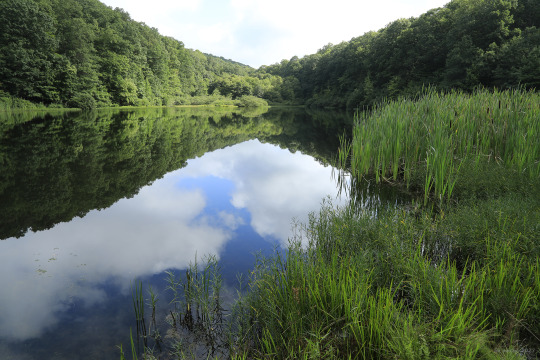
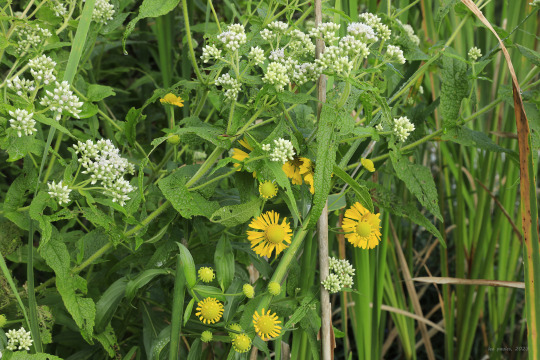
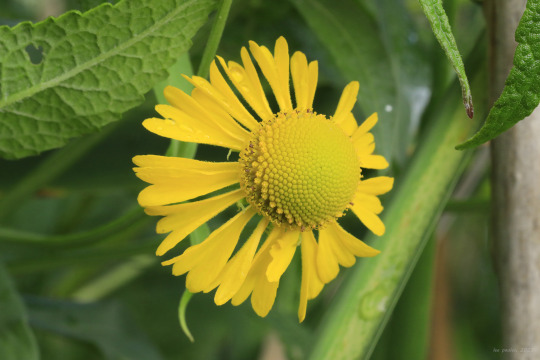



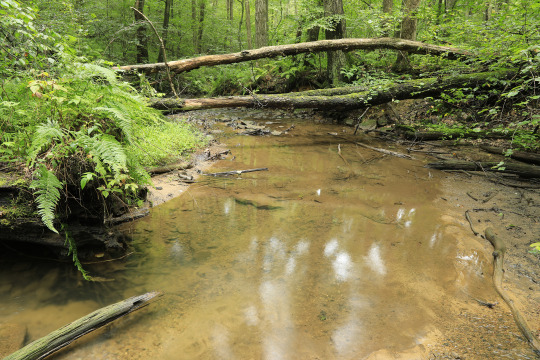


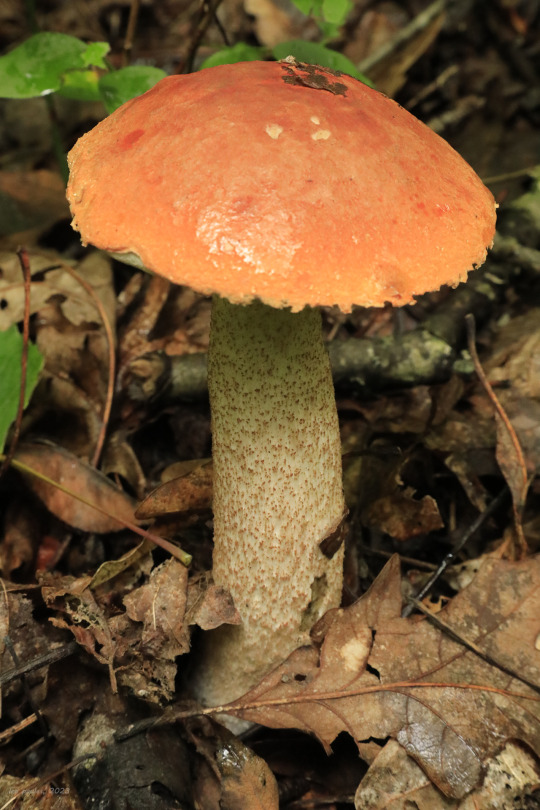

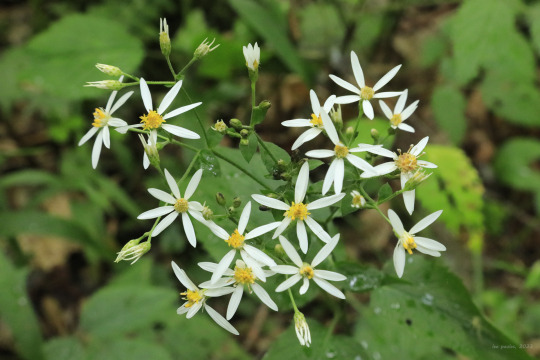

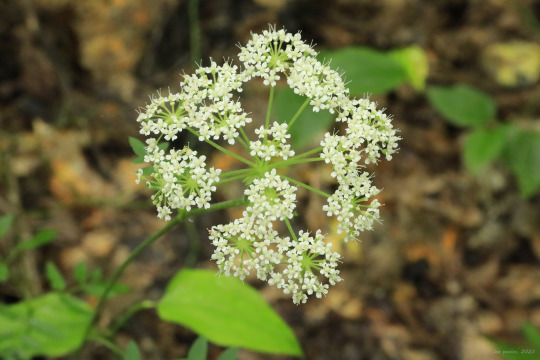
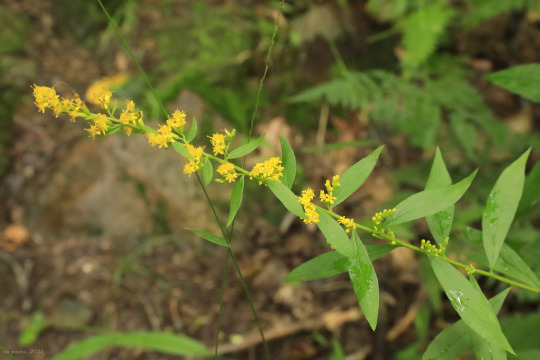

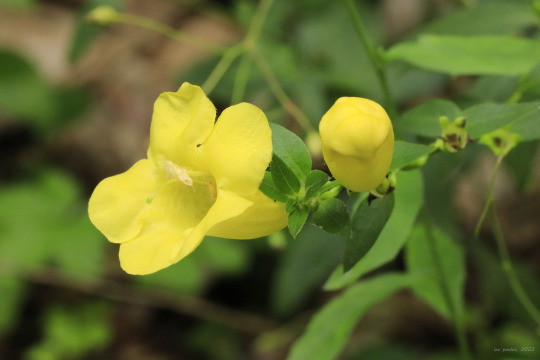

The one thing that excites me more than a pop-up summer thunderstorm is a walk in a damp, dripping, glowing-green forest after the storm has passed. The forest's living essence is made all the more real and immediate by the intoxicating perfume of decaying things, creatures flitting like ghosts through the leaves and underbrush, and clinging raindrops unleashed from the treetops by an evanescent breeze. Photos above are from a hike this morning on Glade Run Trail in Coopers Rock State Forest.
From top: common boneset (Eupatorium perfoliatum), which is closely related to Joe Pye weed, and sneezeweed (Helenium autumnale); the deep purple-red berries of common elderberry (Sambucus canadensis); hollow Joe Pye weed (Eupatorium fistulosum), which can attain a height of 7 to 8 feet; eastern tiger swallowtail (Papilio glaucus), whose tattered wings show the wear and tear of summer errands; a colony of gregarious fungi, perhaps cross-veined troop mushroom (Xeromphalina kauffmanii), which grow in huge numbers on decaying hardwoods; a red-capped bolete, perhaps Leccinum longicurvipes, which is symbiont with oak trees; an eastern newt (Notophthalmus viridescens); white wood aster (Eurybia divaricata); bigleaf aster (Eurybia macrophylla); cowbane (Oxypolis rigidior), also known as common water dropwort; bluestem goldenrod (Solidago caesia), a woodland goldenrod with flowerheads in the leaf axils; and Appalachian oak-leach (Aureolaria laevigata), also known as smooth false foxglove, which is semi-parasitic on oak tree roots.
#appalachia#vandalia#west virginia#wildflowers#flora#summer#coopers rock state forest#glade run trail#common boneset#sneezeweed#common elderberry#hollow joe pye weed#eastern tiger swallowtail#butterfly#lepidoptera#eastern newt#amphibian#fungi#bolete#white wood aster#bigleaf aster#cowbane#common water dropwort#bluestem goldenrod#blue-stemmed goldenrod#wreath goldenrod#appalachian oak-leach#smooth false foxglove
138 notes
·
View notes
Text

Bombus on Eupatorium fistulosum / Bumblebees on Hollow Joe-Pye Weed at the Juniper Level Botanical Gardens in Raleigh, NC
#Bombus#Eupatorium fistulosum#Eupatorium#Hollow Joe-Pye Weed#Trumpetweed#Purple thoroughwort#Joe-Pye Weed#Native plants#Native flowers#Native insects#Native pollinators#Nature photography#Flowers#Juniper Level Botanical Gardens#Raleigh NC#Raleigh#North Carolina#Bumblebee#Bumblebees
0 notes
Text
The Garden and Nursery Boat by Allen Bush
Photo from the 1924 film: The Dramatic Life of Abraham Lincoln.
I stared out my elementary school window for years, bored out of my skull, determined to forsake fractions for adventure. The Ohio River, my escape route, was a few miles away.
My curiosity for the river life was inspired by Huckleberry Finn and amplified years later by Harlan Hubbard’s Shanty Boat and the follow-up, Shantyboat on the Bayous, both published in the 1950s.
Carolyn Brooks must have read my mind when she sent me an email a few weeks ago:
“I am attaching a charming little clipping I found in an 1837 issue of the New Orleans True American. I never know what to do with the wonderful little tidbits I find on subjects completely unrelated to whiskey, but I try and think of somebody who might appreciate them.”
The clipping pertained to botanical goods for sale from the boat of John D. Stack, at a landing in New Orleans that year.
Ad from the New Orleans “True American.” March 2, 1837.
Carolyn Brooks is an historian, currently researching whiskey and brandy arrivals and sales in New Orleans. “Cargoes of whiskey” were shipped down the river, but I had never heard of a garden and nursery boat. I was fascinated with the image of a boatload of plants making its slow way to river ports and gardens unknown.
Harlan and Anna Hubbard navigated the rivers over 100 years after John D. Stack. The Hubbards were resourceful but didn’t care about making money. If they’d been from the same era as Mr. Stack, I can imagine the Hubbards might have tried to barter one of Harlan’s paintings for a half-dozen “splendid double dahlias” and a “variety of garden seeds” from J.D. Stack.
In the foreword to Shantyboat on the Bayous, Don Wallis quotes Harlan Hubbard. “We went to the riverbank, built a shanty boat and began a new life together.” They departed from Brent, KY, near Cincinnati on the Ohio River, and “negotiated the treacherous Mississippi River—“a fool’s graveyard” with their “tools, books, dogs (Skipper and Sambo), bicycle, scraps of material, summer and winter clothing, violin, viola, cello and equipment for painting.” They reached the Louisiana bayous in a little under four years (1946-1950).
The Hubbards stopped to plant vegetable gardens along the way and eventually came back and settled at Payne Hollow, along the Ohio River in Trimble County, KY. Here they gardened, fished, played music, painted and lived a simple and happy life.
Harlan Hubbard. Photo: Shantyboat Living
Carolyn Brooks emailed more information about J.D. Stack, the flat boater and nurseryman. “I am a research nut,” she said.
“John D. Stack lived all of his adult life in Steubenville, OH. He is listed in the 1850 federal census as a ‘gardener’ and in the 1860 census as a ‘horticulturalist.’ In 1850 he appeared to be rather prosperous with a personal estate of $6,000, but by 1857 he was forced to sell large amounts of his property, and by 1860 his personal estate was listed as $200.”
Ad from the Vicksburg Weekly. January 17, 1837.
Carolyn adds: “The flatboat trip may have been a one-time venture. I did find one more wonderful ad from a stop in Vicksburg, MS, obviously on that same trip. He probably made multiple stops as he made his way down the river. Then, as you probably know, the flatboat would have been sold and broken up in New Orleans. It is amazing to think of navigating a flatboat down the river system so far, but it was quite common for the boats to come from Pittsburgh and its environs.”
Years have gone by since I began plotting my future on the river. I didn’t keep pace with my childhood dream. I never made it past the McAlpine Locks and Dam, near downtown Louisville. But I still daydream about floating down the Ohio River and the mighty Mississippi.
Engraving from steamboattimes.com
I can see it now.
My own flatboat, or shanty boat, is loaded, full of plants for sale or barter.
One week only…25% off of aromatic aster, Japanese roof Iris, Joe-Pye weed, crinums, phloxes and seedling white oaks!
Coming soon to a river town near you.
The Garden and Nursery Boat originally appeared on Garden Rant on July 12, 2017.
from Garden Rant http://gardenrant.com/2017/07/the-garden-and-nursery-boat.html
0 notes
Text
The Garden and Nursery Boat by Allen Bush
Photo from the 1924 film: The Dramatic Life of Abraham Lincoln.
I stared out my elementary school window for years, bored out of my skull, determined to forsake fractions for adventure. The Ohio River, my escape route, was a few miles away.
My curiosity for the river life was inspired by Huckleberry Finn and amplified years later by Harlan Hubbard’s Shanty Boat and the follow-up, Shantyboat on the Bayous, both published in the 1950s.
Carolyn Brooks must have read my mind when she sent me an email a few weeks ago:
“I am attaching a charming little clipping I found in an 1837 issue of the New Orleans True American. I never know what to do with the wonderful little tidbits I find on subjects completely unrelated to whiskey, but I try and think of somebody who might appreciate them.”
The clipping pertained to botanical goods for sale from the boat of John D. Stack, at a landing in New Orleans that year.
Ad from the New Orleans “True American.” March 2, 1837.
Carolyn Brooks is an historian, currently researching whiskey and brandy arrivals and sales in New Orleans. “Cargoes of whiskey” were shipped down the river, but I had never heard of a garden and nursery boat. I was fascinated with the image of a boatload of plants making its slow way to river ports and gardens unknown.
Harlan and Anna Hubbard navigated the rivers over 100 years after John D. Stack. The Hubbards were resourceful but didn’t care about making money. If they’d been from the same era as Mr. Stack, I can imagine the Hubbards might have tried to barter one of Harlan’s paintings for a half-dozen “splendid double dahlias” and a “variety of garden seeds” from J.D. Stack.
In the foreword to Shantyboat on the Bayous, Don Wallis quotes Harlan Hubbard. “We went to the riverbank, built a shanty boat and began a new life together.” They departed from Brent, KY, near Cincinnati on the Ohio River, and “negotiated the treacherous Mississippi River—“a fool’s graveyard” with their “tools, books, dogs (Skipper and Sambo), bicycle, scraps of material, summer and winter clothing, violin, viola, cello and equipment for painting.” They reached the Louisiana bayous in a little under four years (1946-1950).
The Hubbards stopped to plant vegetable gardens along the way and eventually came back and settled at Payne Hollow, along the Ohio River in Trimble County, KY. Here they gardened, fished, played music, painted and lived a simple and happy life.
Harlan Hubbard. Photo: Shantyboat Living
Carolyn Brooks emailed more information about J.D. Stack, the flat boater and nurseryman. “I am a research nut,” she said.
“John D. Stack lived all of his adult life in Steubenville, OH. He is listed in the 1850 federal census as a ‘gardener’ and in the 1860 census as a ‘horticulturalist.’ In 1850 he appeared to be rather prosperous with a personal estate of $6,000, but by 1857 he was forced to sell large amounts of his property, and by 1860 his personal estate was listed as $200.”
Ad from the Vicksburg Weekly. January 17, 1837.
Carolyn adds: “The flatboat trip may have been a one-time venture. I did find one more wonderful ad from a stop in Vicksburg, MS, obviously on that same trip. He probably made multiple stops as he made his way down the river. Then, as you probably know, the flatboat would have been sold and broken up in New Orleans. It is amazing to think of navigating a flatboat down the river system so far, but it was quite common for the boats to come from Pittsburgh and its environs.”
Years have gone by since I began plotting my future on the river. I didn’t keep pace with my childhood dream. I never made it past the McAlpine Locks and Dam, near downtown Louisville. But I still daydream about floating down the Ohio River and the mighty Mississippi.
Engraving from steamboattimes.com
I can see it now.
My own flatboat, or shanty boat, is loaded, full of plants for sale or barter.
One week only…25% off of aromatic aster, Japanese roof Iris, Joe-Pye weed, crinums, phloxes and seedling white oaks!
Coming soon to a river town near you.
The Garden and Nursery Boat originally appeared on Garden Rant on July 12, 2017.
from Garden Rant http://ift.tt/2u8yHL2
0 notes
